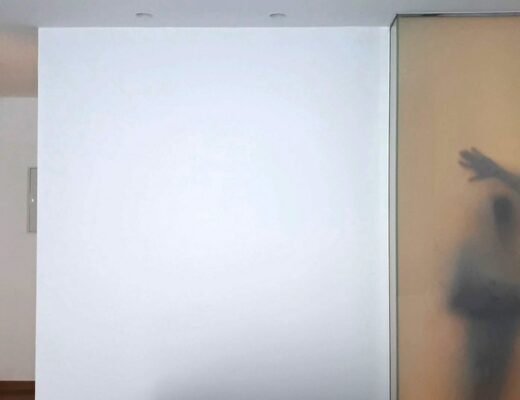Srdan Keca’s observational documentary, Museum of the Revolution, begins in darkness. The viewer reads a series of words from 1961: “The purpose of the Museum of the Revolution is to safeguard the truth… one cannot approach the task of designing this building using conventional ideas about museums.” Then, Keca lets there be light: a fire in a nighttime darkness. Here, the viewer first encounters a generationally-divided trio living in the basement of the never-completed Museum of the Revolution. What was meant to be a utopian socialist gathering space never made it out of the grave. What remains is its unfinished basement: concrete slabs, stray rats, and drifting unhoused people, forgotten or otherwise left behind like the hopeful future that never was.
Mara is an older woman whose strained relationship with her battered daughter causes her great pain — more, much more, than her own circumstance. Mara shepherds Vera, a struggling mother with a husband in jail and a daughter, Milica, who she anxiously keeps by her side, weary of the risk of losing her to protective services as she combs through cars, hoping to offer a squeegee in return for a small token of recognition. Keca’s film is thus one concerned with the poetry of motion, and his visual language is soft, tempered, and melodic. The viewer watches as Vera and Milica wade through time in the same way they do the busy streets of Belgrade, waiting patiently, and for what? A customer. A sign. Something to look forward to. Museum of the Revolution is a beautiful film because it captures the rhythm of life in descent. It nestles itself in the painful silences of absence — absence of hope, absence of needs — and settles on these women, as small moments of supple sweetness emerge in territory that by-and-large feels inhospitable to any such possibilities.
The film is not a comfortable one to watch. It’s often dark, silent, and dirty. The viewer lives alongside these pained women who Keca so vividly captures, and there’s a discomfort in the film’s role as witness, raising questions around the ethics of observation, and where the line is drawn between careful advocacy and truth-telling and rubbernecking, exploitation, and sanctimonious pitying. Thankfully, Museum of the Revolution stays on the right side of that line; Keca’s gaze and the way in which he so empathetically frames the lives of those dismissed and unseen is remarkably tender. The world he depicts is foreign, but what is familiar is the otherness of the women depicted. These are people that we are cognizant of, that we see everyday, those we too easily forget about just as quickly as we encounter them. Society conditions us to feel that they are in some way a nuisance, a less than that we could never become. Of course, this is arrogant. Of course, this is false. We all live in hope of futures that will never come. This is what it means to be human.
In this way, Museum of the Revolution is a film that reminds the viewer of the breadth of human experience, and the impossibility of capturing that in language. There is beauty in Keca’s use of silence, and in the poetry he conjures in the camera’s organic, fluid movements that trace these women as they strain against the soft violence of time’s wet flow. Keca affords the viewer the privilege of standing with these women in the face of this unrelenting force, and in doing so, we find ourselves slightly closer to life.
Published as part of InRO Weekly — Volume 1, Issue 22.
Enjoy our content? Want early access to features, interviews, and more? Support us on Patreon!







